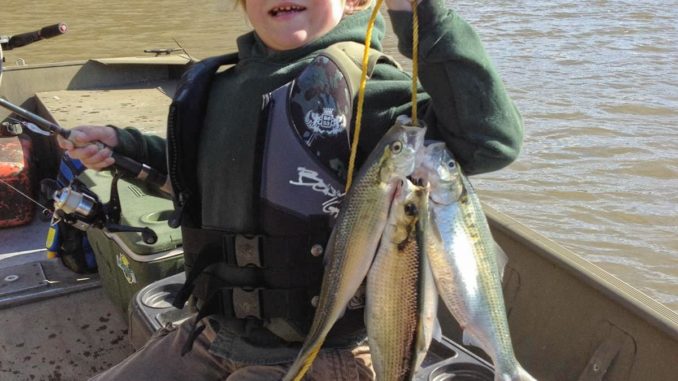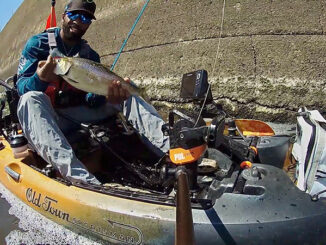
New Bern, Kinston and upstream will hold fish
March is a magical month in North Carolina as it makes the first spawning runs of the season at many coastal rivers.
The best stream for shad runs may be the in the Neuse River upstream from New Bern to the backwaters of its many upstream feeder creeks.
The shad migration means spawning striped bass won’t be trailing far behind.
“From mid-March to the first or second week of April usually is when the shad run happens,” said veteran angler Danny Joe Humphrey of Kinston. “But it varies, depending upon the amount of (flow).
“When the river’s high, it doesn’t take as long for them to get (upstream). But when the water’s confined between the banks, it makes them much easier to catch.”
The N.C. Wildlife Resources Commission allows American and hickory shad to be taken from the Neuse and its tributaries. The daily creel is 10 per angler of the two species, but only two may be American, aka white shad.
American shad can grow to sizes that rival largemouth bass. In March 2016, biologists Ben Ricks and Kyle Rachels sampled the Neuse River at Goldsboro and Fort Barnwell and caught 20 American shad and one striped bass, with the largest white shad weighing 3 pounds.
“I guided two fellas years ago, and one caught a 61/2-pound white shad,” Humphrey said. “I thought it was a (grinnel). A boy from Kinston caught the state-record hickory shad in Pitchkettle Creek (in 2004).”
That shad weighed 4 pounds, 1 ounce. The state-record American shad weighed 7 pounds, 15 ounces; it came from the Tar River in 1974.
“You can catch shad at the wildlife ramp and from the banks at the Queen Street Bridge in Kinston,” Humphrey said.
“Upstream, there’s good fishing at the mouth of Falling Creek and Contentnea Creek and farther up Contentnea.”
Contentnea forms the border for Lenoir, Pitt and Greene counties.
“If the water level is right, it’s as good a place as there is,” he said. “But the all-time best shad-fishing spot is infamous Pitchkettle Creek. The river makes a 90-degree turn, and the creek’s wider than the river. If the water’s flowing out of the creek, shad go into the creek. When I was growing up, it was the magic spot.”
Humphrey recommends light-tackle spin tackle with 6- to 8-pound monofilament and a 12-pound leader.
“Good lures include small Tony Acetta Pet spoons with yellow bellies in tandem with a shad dart tied to a dropper line to run 6 inches in front of the spoon,” Humphrey said. “You’ll catch a lot of doubles. You can fish a 1-inch curlytail grub on a 1/8-ounce leadhead jig that’s got a pink or red head.”
Another good spot south of Kinston is Grinnel Creek.
“Its canal system drains land up to Grifton, so you have to go the back end of (Grinnel),” Humphrey said.
Shad are easy to catch, look like mini-tarpons and jump like them.
“For every 50 you catch, maybe three or four will be white shad,” he said.



Be the first to comment